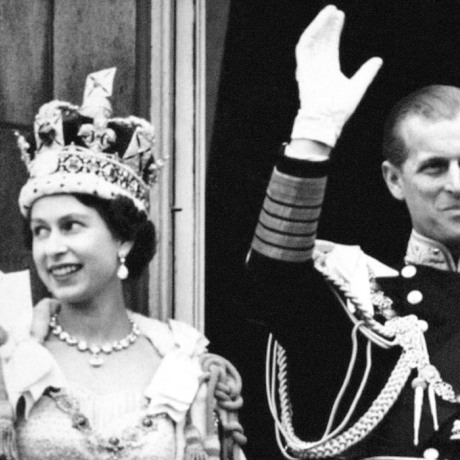Accession
In 1952, King George VI's health was poor, and illness forced him to abandon a proposed Commonwealth tour. Princess Elizabeth, accompanied by Prince Philip, took his place, departing from London Airport on 31 January 1952.
On 6 February 1952, she received the news of her father's death and her own accession to the throne while on an official visit to Kenya, the first country of the Commonwealth tour. In an instant, she ceased to be Princess Elizabeth and became Queen Elizabeth II.
Following the news, the tour was abandoned, and the young Princess flew back to Britain as Queen. She was greeted by Prime Minister Winston Churchill and other officials at the airport before returning to Clarence House, where the Royal Standard flag was flown for the first time in her reign.
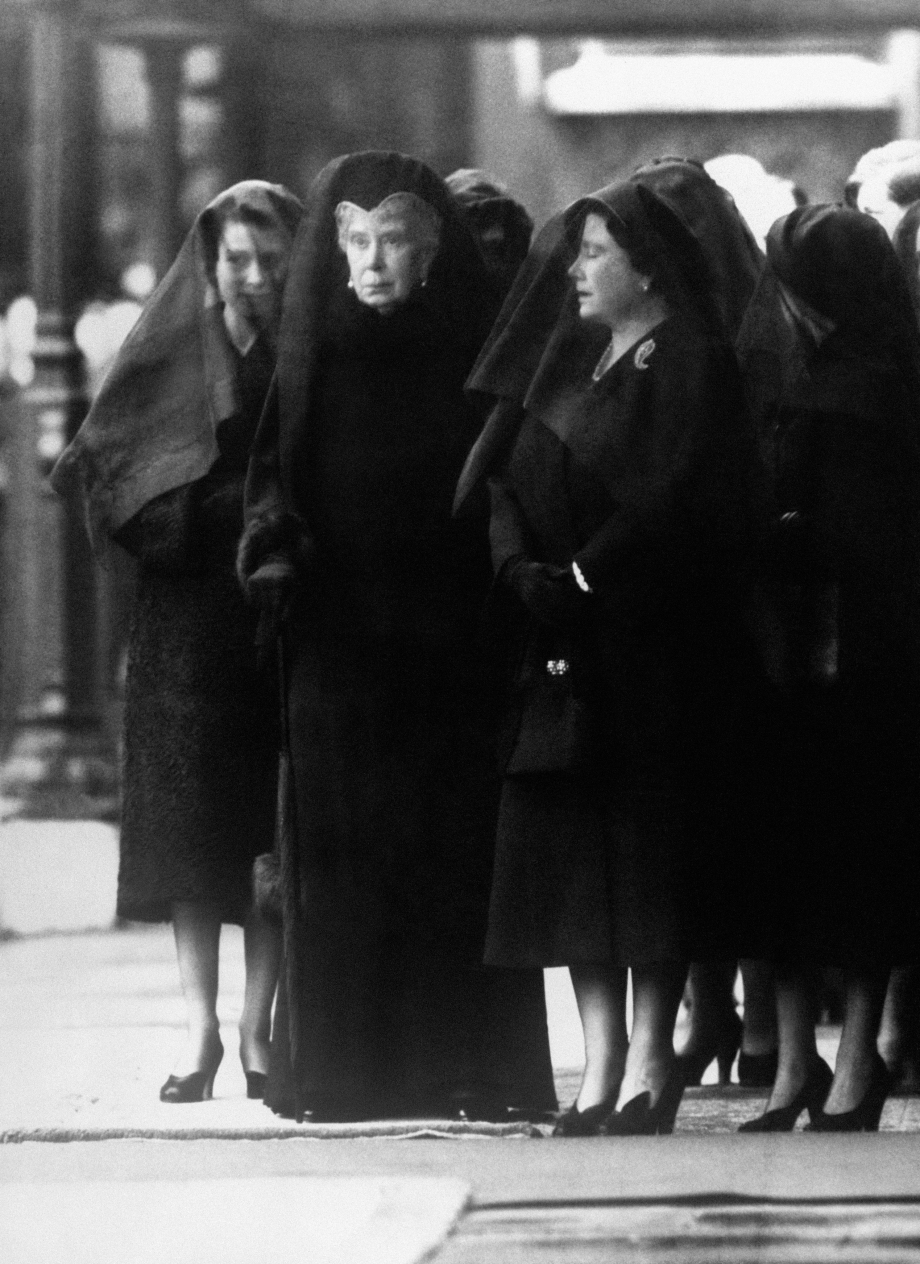
The Coronation ceremony
On the eve of her Coronation, the day before she was to make her formal oath at Westminster Abbey, The Queen made a radio broadcast to the Commonwealth in which she pledged her devotion to its people, saying,
Throughout all my life and with all my heart I shall strive to be worthy of your trust.
The Coronation took place in Westminster Abbey on 2 June 1953, conducted by Dr Geoffrey Fisher, Archbishop of Canterbury.
Her Majesty was anointed by the Archbishop and took her oath to “maintain and preserve inviolably the settlement of the Church of England, and the doctrine worship, discipline, and government thereof, as the law established in England.”
Representatives of the peers, the Commons and all the great public interests in Britain, the Prime Ministers and leading citizens of the other Commonwealth countries, and representatives of foreign states were present.
Though the husband of a reigning Queen, unlike a Queen Consort, is not crowned or anointed at the Coronation ceremony, The Duke of Edinburgh was the first peer to ‘do homage’ or pay his respects to The Queen, immediately after the Archbishops and Bishops.
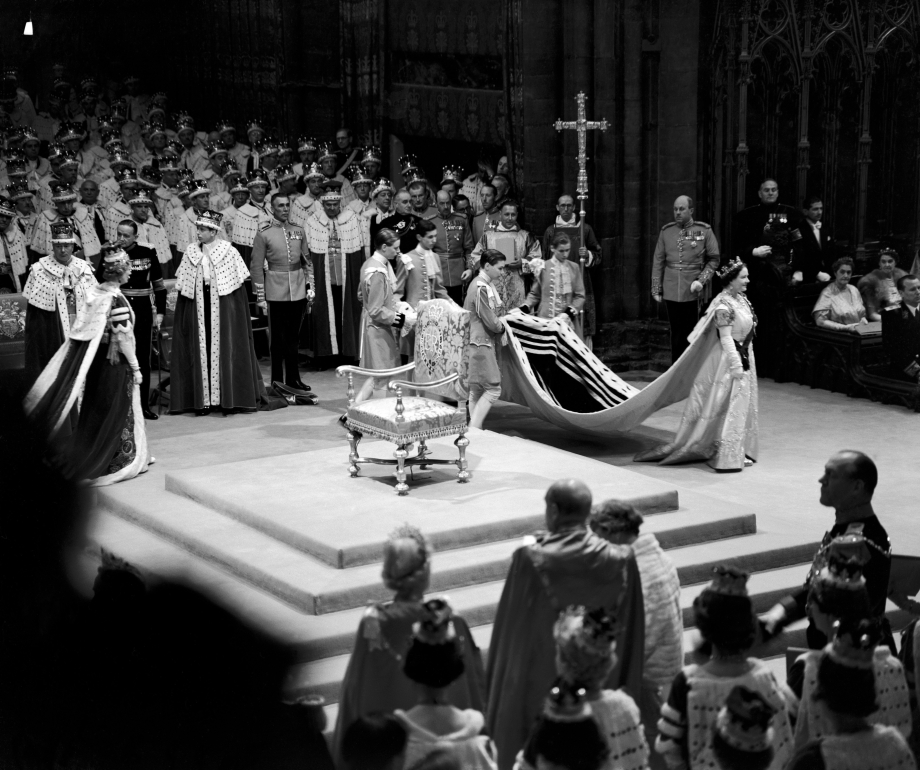
The first televised Coronation
The ceremony was broadcast on radio around the world and, at The Queen's request, on television for the first time.
Television brought the splendour and significance of the Coronation to millions of people around the world, in a way never before possible. An estimated 27 million people in Britain watched the ceremony on television and 11 million listened on the radio (the population of Britain at the time was just over 36 million.)
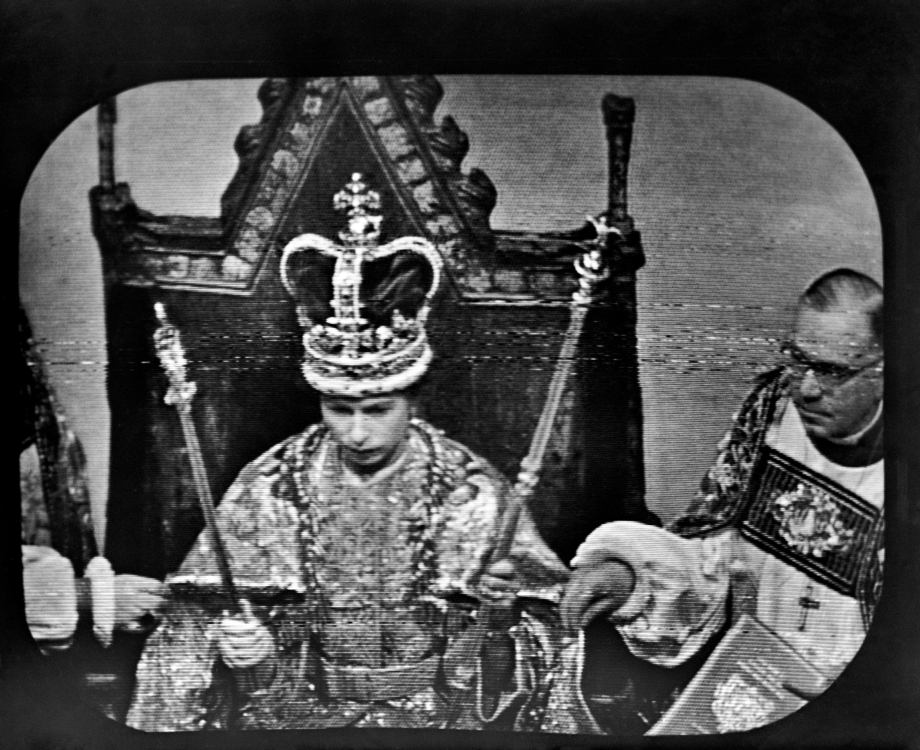
There were more than 2,000 journalists and 500 photographers from 92 nations on the Coronation route.
Regalia and dress
On the journey to Westminster Abbey, The Queen wore the State Diadem, a circlet of diamonds, which she went on to wear for the State Opening of Parliament throughout her reign.
St Edwards Crown was used to crown Her Majesty at the Coronation service, and The Queen wore The Imperial State Crown on her departure from Westminster Abbey.
The Coronation Dress was designed by Sir Norman Hartnell, and Her Majesty went on to wear it during receptions at Buckingham Palace and the Palace of Holyroodhouse and for the Openings of Parliament in New Zealand, Australia and Ceylon in 1954, ensuring that it was seen across the Commonwealth.
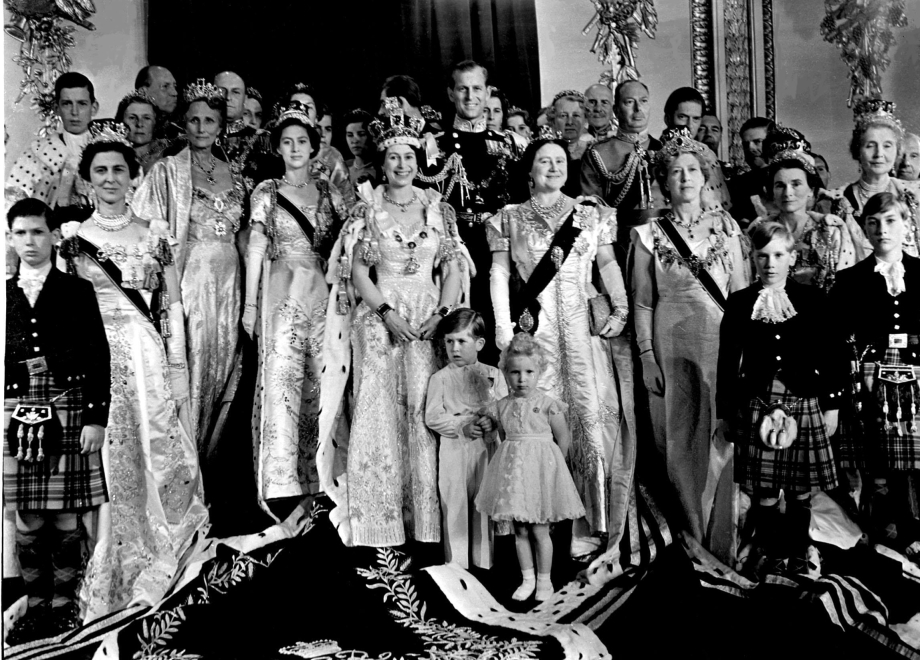
The Coronation Bouquet was presented to The Queen by the Worshipful Company of Gardeners to take with her on the journey to Westminster Abbey. The all-white bouquet comprised orchids and lilies-of-the-valley from England, stephanotis from Scotland, and carnations from Northern Ireland and the Isle of Man, with additional orchids from Wales.
Procession
A Coronation procession took place through London after the service, designed so that The Queen and her procession could be seen by as many people as possible. The 7.2 kilometre route took the 16,000 participants two hours to complete. The procession itself stretched for three kilometres. Those on foot marched 10 abreast while those on horseback were six abreast.
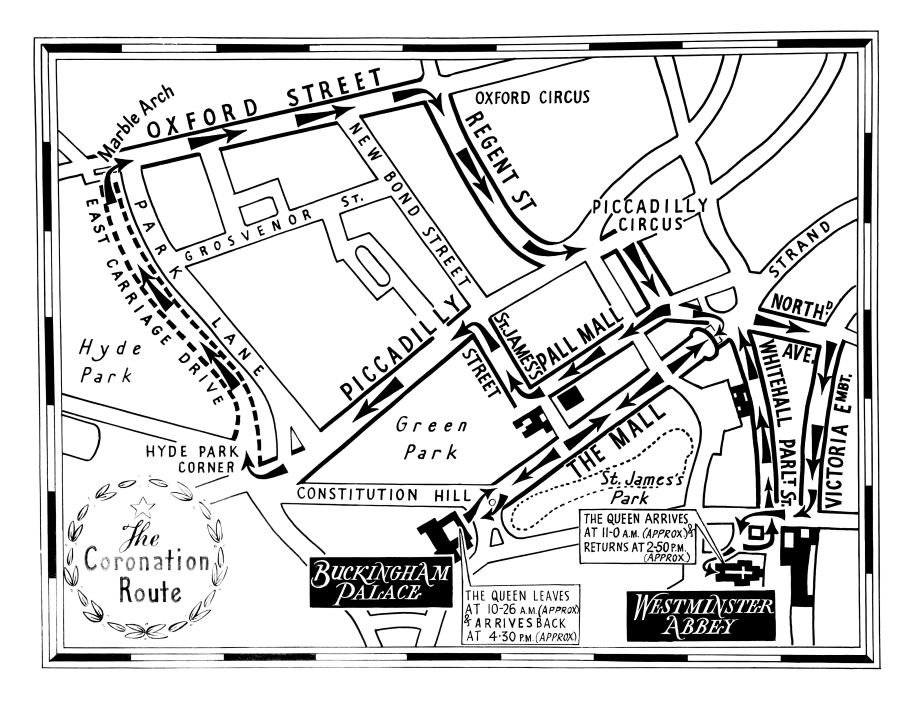
The officers and men taking part in the procession or lining the route totalled 29,200: 3,600 from the Royal Navy, 16,100 from the Army and 7,000 from the RAF, 2,000 from the Commonwealth and 500 from the then Empire. There were 6,700 reserve and administrative troops, while 1,000 officers and men of the Royal military police were bought in to assist the Metropolitan police. A further 7,000 police were drawn from 75 provincial forces. Crowds of people viewed the procession despite heavy rain.
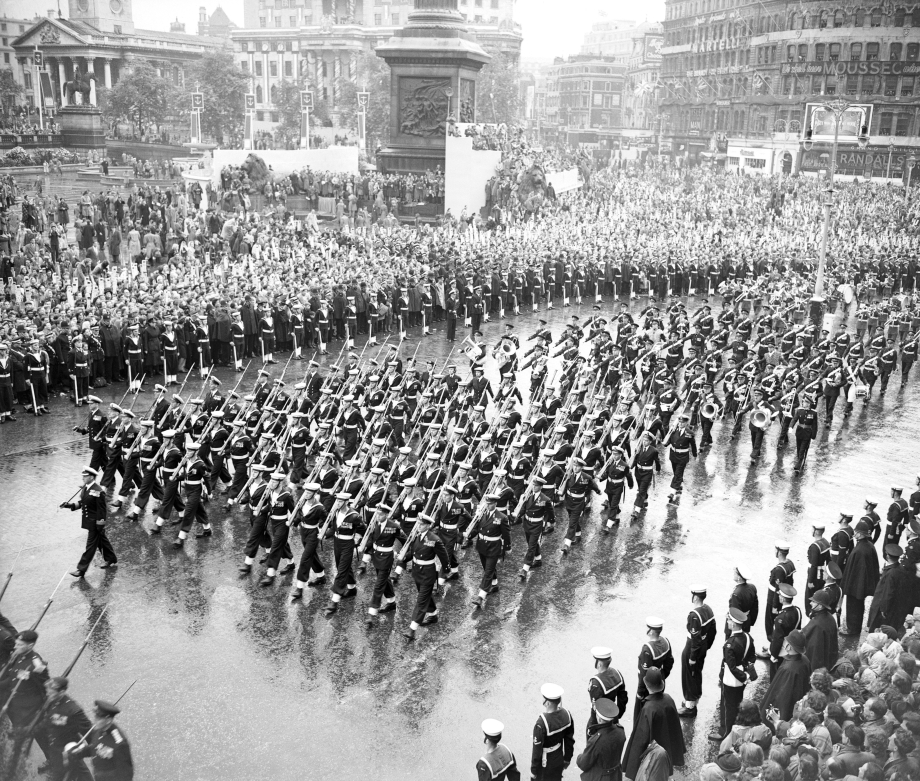
In the weeks following the Coronation, The Queen reviewed the Royal Navy Fleet at Spithead, Portsmouth and visited Scotland, Northern Ireland and Wales as part of continued celebrations.

